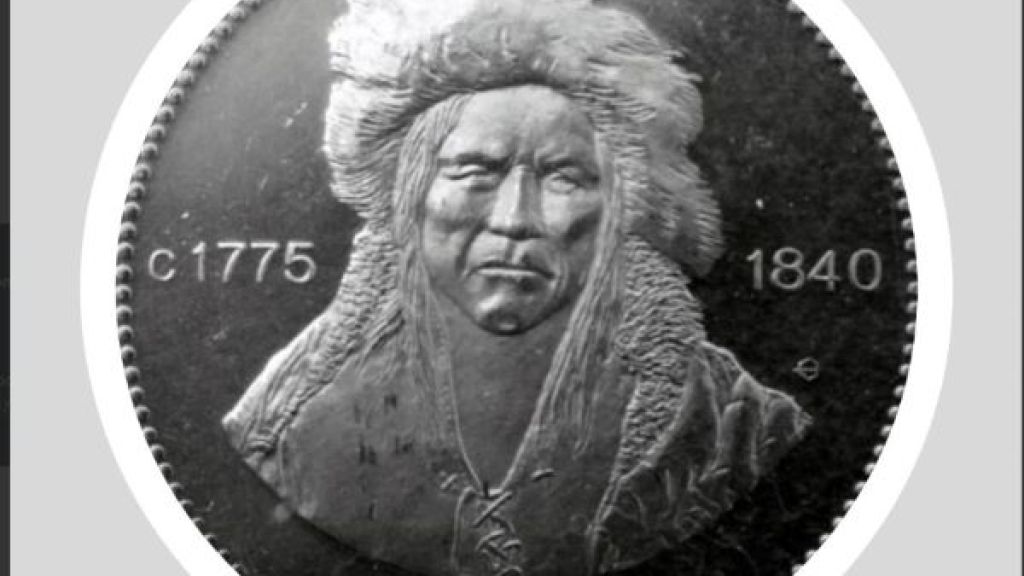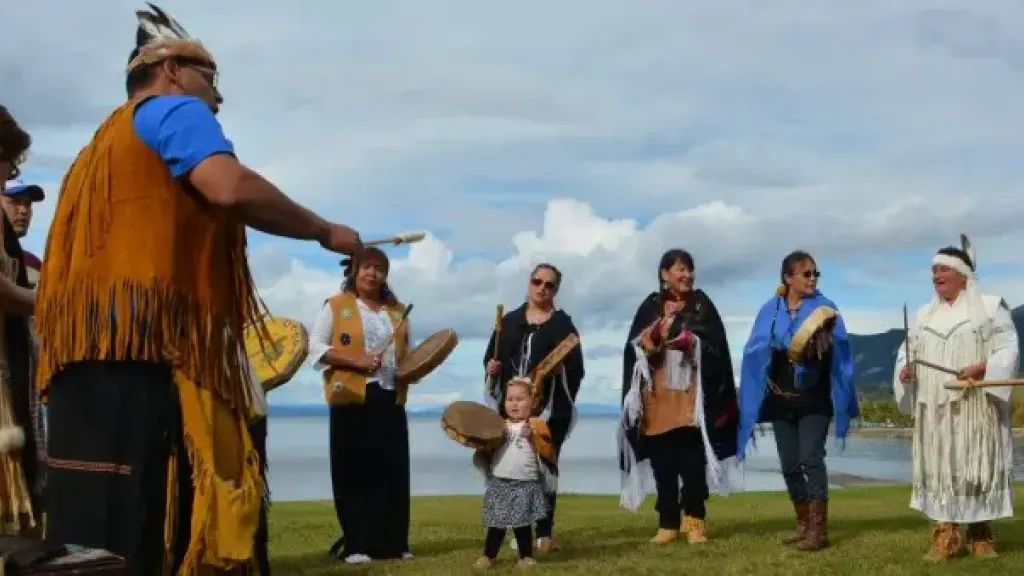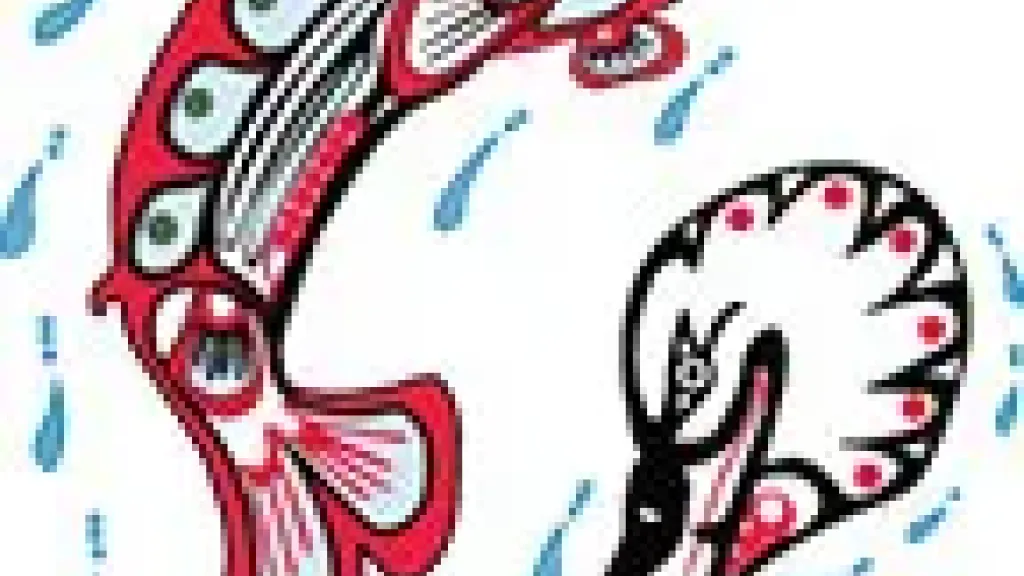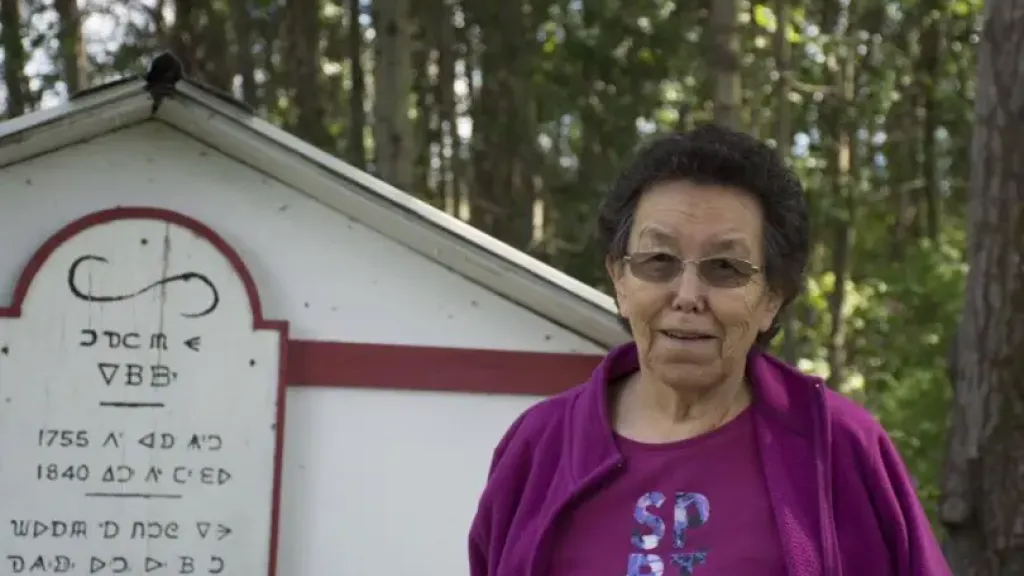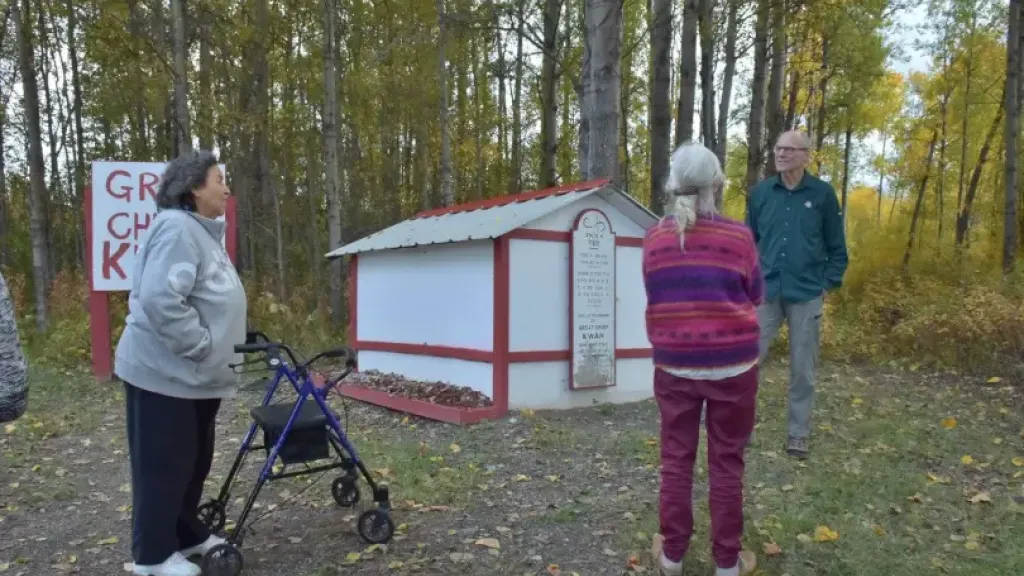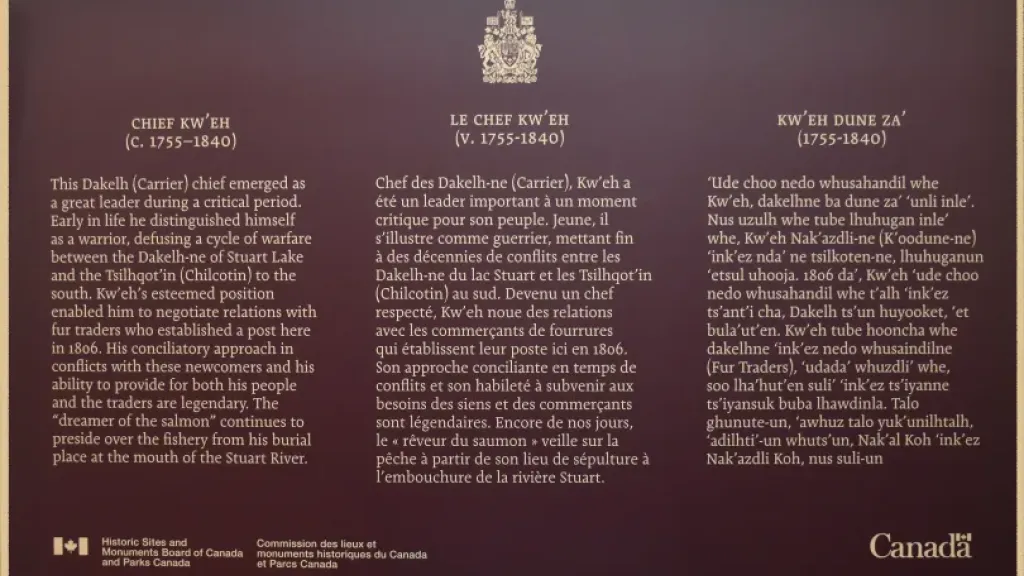Great Chief Kw’eh was born about 1755 and died in the spring of 1840. He was a member of the Lhts’umusyoo (Beaver) clan and known to his people as the Dreamer of Salmon.
The Dreamer of the Salmon
Chief Kw’eh, “Dreamer of the Salmon,” chose his burial place at the mouth of the Nak’al Koh (Stuart River), where he presided over the salmon weirs that fed his people.
After the death of Chief Kw’eh, people reported hearing the sound of his rattle announcing the annual salmon runs—and they remembered his promise that he would continue to provide for his people as long as he is remembered.
National Historic Significance
Chief Kw’eh is recognized as a person of national historic significance. He was a great leader, warrior and nobleman. Chief Kw’eh kept his people secure and prosperous on the vast lands of Dakelh territory.
Many Carrier people proudly call Kw’eh their ancestor. According to oral tradition, Kw’eh had five wives who came from Nak’azdli, Stellaquo, Saik’uz (Stony Creek), and K’uzche (Grand Rapids).
He is also known for his acquisition of an iron dagger prior to the arrival of the first
Europeans in the area, presumably one traded in from the coast.
European Contact
It was Chief Kw’eh who received the explorer Simon Fraser in 1806 when the Carrier brought him to Tsaooche village. In gratitude, Simon Fraser presented Kw’eh with red cloth. The current Ts’oh Dai, Kw’eh’s descendant Peter Erickson, returned red cloth to Canada in 1997.
Kw’eh famously spared the life of fur trader and future BC governor James Douglas.
Chief Kw’eh Plaque Unveiling
The Nak’azdli Whut’en community joined with Fort St. James and Parks Canada to celebrate the Dreamer of Salmon on September 17, 2016. A new plaque inscribed in Dakelh (Carrier), English, and French was unveiled during the event.
The English inscription reads:
CHIEF KW’EH
(c. 1755-1840)
This Dakelh (Carrier) chief emerged as a great leader during a critical period. Early in life he distinguished himself as a warrior, defusing a cycle of warfare between the Dakelh-ne of Stuart Lake and the Tsilhqot’in (Chilcotin) to the south. Kw’eh’s esteemed position enabled him to negotiate relations with fur traders who established a post here in 1806. His conciliatory approach in conflicts with these newcomers and his ability to provide for both his people and the traders are legendary. The “dreamer of the salmon” continues to preside over the fishery from his burial place at the mouth of the Stuart River.

